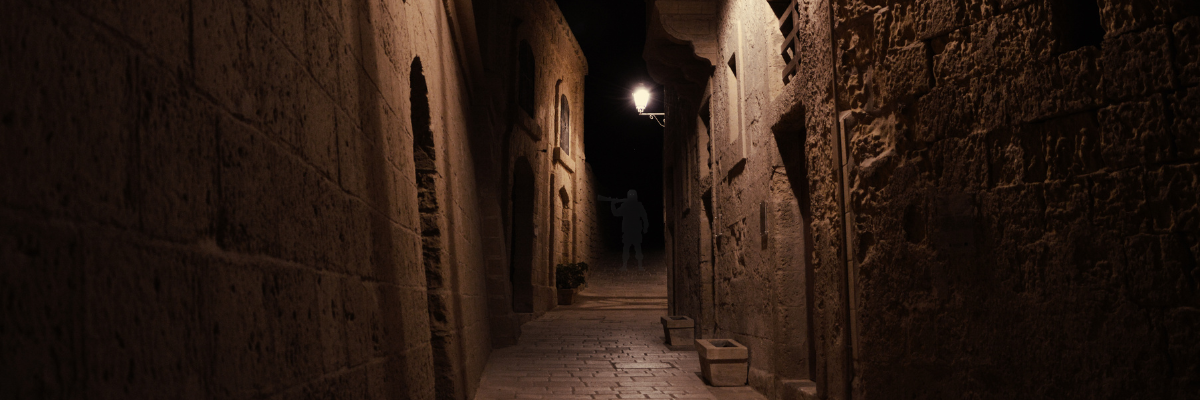The Hammersmith Ghost: A Case of Murder
When Thomas Milwood stepped into the bitter cold air one evening in January 1804, he had a few thoughts on his mind: the events of his work day, his wife, tomorrow’s to-do list, etc… The thought that tonight would be his last, however, was not one of them.
His wife was a few streets away, finishing her work as a laundress. Thomas planned to take a brisk stroll, enjoying the peacefulness of a winter walk, before meeting his wife and returning home. He left his London flat wearing traditional garb for his work as a bricklayer: a white shirt and a white apron – clothing that would make him the target of rumors, mass hysteria, and, on that very evening, murder.
Two months prior, stories of a paranormal kind circled the streets of Hammersmith, a district of West London, England. The village gossip spoke of a terrifying ghost that walked the streets at night, frightening all who encountered it. The alleged apparition, however, was none other than the flesh-and-blood human, Thomas Milwood. Before that fateful January night, Mr. Milwood had nocturnal habits and enjoyed taking evening strolls, donning his uniform. His all-white attire and late-night outings led villagers to mistake Thomas for a ghost. According to his family, Thomas was aware of this misconception but chose to ignore it. Mere days before his death, his mother-in-law voiced her concerns, informing Thomas that two locals had seen him in his all-white garb and assumed he was the “Hammersmith Ghost.” She advised him to wear a gray coat to avoid further gossip. Mr. Milwood scoffed, “I’m no more a ghost than the rest of them,” and headed out into the night.
At a nearby pub on Black Lion Lane, Francis Smith drank several mugs of ale while listening to fellow patrons share their stories of the “Hammersmith Ghost.” Encounters with this apparition had been terrifying their town for months, and, on this night, Francis had enough. Downing the last of his drink, he grabbed his gun, and armed with a weapon and drunken bravado, stepped into the night. An hour later, Thomas Milwood lay dead on the cold, London streets… with Francis Smith standing over him.
When brought to trial, Francis Smith pleaded to the magistrate for mercy: he never had any intention of taking Thomas Milwood’s life. He shot Mr. Milwood believing that he was pointing his barrel at a terrifying ghost. Mr. Smith solely wanted to rid the town of the feared Hammersmith Ghost, once and for all. However, his vigilante antics only resulted in creating another spirit – the lone and dreary soul of Thomas Milwood, a life cut short by fear of the unknown.
One of the most compelling elements of the Hammersmith Ghost Murder is that it posed a supernatural legal dilemma. Can a defendant be convicted of murder if they genuinely believed they were defending themselves from a ghost? The case would set a new precedent in the law of murder and remained a topic of legal debate amongst lawyers for generations.
After presenting the evidence, the jury deliberated and originally brought forth the verdict of manslaughter. The Lord Chief Baron, informed them, however, that a manslaughter verdict could not apply to this situation; Francis Smith must be found either guilty or not guilty and sentenced accordingly. Showing mercy to a prisoner was a prerogative of the Crown, not the jury. So, Francis Smith was found guilty of murder and sentenced to death. The King, upon hearing the unusual circumstances of the case, pardoned Smith on the condition he served one year in prison. Smith obliged, served his time, and lived a free life. The same could not be said for poor Thomas Milwood.
So what do you believe: Was Thomas Milwood’s death an accident caused by an unfortunate misconception? Or should Francis Smith have been tried and held fully accountable for murder? It’s a multi-faceted scenario, as vexing now as it was 200 years ago. All we can do is present the facts of the case, plain and true. The “rightful” conclusion, dear viewers? We’ll leave that up to you.





